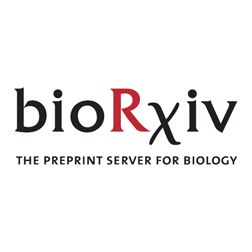https://research.pasteur.fr/en/team/evolutionary-biology-of-the-microbial-cell/
We discuss how tethering the OM to the PG in E. coli preserves integrity — and extend the concept across diderm bacteria.
Curr Opin Microbiol: doi.org/10.1016/j.mi...
#microsky 🔬
We discuss how tethering the OM to the PG in E. coli preserves integrity — and extend the concept across diderm bacteria.
Curr Opin Microbiol: doi.org/10.1016/j.mi...
#microsky 🔬

www.findaphd.com/phds/project...
📅 January 7, 2026
Please RP🙏thx!


www.findaphd.com/phds/project...
📅 January 7, 2026
Please RP🙏thx!
@sgribaldo.bsky.social @pasteur.fr
🔗 Full article linked in reply👇
www.sciencedirect.com/science/arti...

@sgribaldo.bsky.social @pasteur.fr
🔗 Full article linked in reply👇
www.sciencedirect.com/science/arti...
Merci à toutes celles et ceux qui ont contribué.
📘 English version coming soon!

Merci à toutes celles et ceux qui ont contribué.
📘 English version coming soon!

Asgard histones form closed and open hypernucleosomes. Closed are conserved across #Archaea, while open resemble eukaryotic H3–H4 octasomes and are Asgard-specific. More here: www.cell.com/molecular-ce...

Asgard histones form closed and open hypernucleosomes. Closed are conserved across #Archaea, while open resemble eukaryotic H3–H4 octasomes and are Asgard-specific. More here: www.cell.com/molecular-ce...

ims2026.itqbnovacommunity.org

ims2026.itqbnovacommunity.org
📜 www.biorxiv.org/content/10.1...



📜 www.biorxiv.org/content/10.1...
#bacteria #microbiology

#bacteria #microbiology

doi.org/10.1126/sci...
With @ray-neuro.bsky.social, Shir Maimon, Liora Las, Nachum Ulanovsky and many others

doi.org/10.1126/sci...
With @ray-neuro.bsky.social, Shir Maimon, Liora Las, Nachum Ulanovsky and many others

@mkrupovic.bsky.social @deemteam.bsky.social @anagtz.bsky.social
www.nature.com/articles/s41...

@mkrupovic.bsky.social @deemteam.bsky.social @anagtz.bsky.social
www.nature.com/articles/s41...
We identified Hib, a new hibernation factor broadly distributed across archaea.
Check out the preprint 👉 biorxiv.org/content/10.1101/2025.10.11.676729v1
(1/🧵)
We identified Hib, a new hibernation factor broadly distributed across archaea.
Check out the preprint 👉 biorxiv.org/content/10.1101/2025.10.11.676729v1
(1/🧵)
We developed new genetic tools & genome-wide libraries for species of the Bacteroidales order; constructed saturated barcoded transposon libraries in key representatives of three genera.
www.biorxiv.org/content/10.1...

We developed new genetic tools & genome-wide libraries for species of the Bacteroidales order; constructed saturated barcoded transposon libraries in key representatives of three genera.
www.biorxiv.org/content/10.1...

Non-photosynthetic Plastid Replacement by a Primary Plastid in the Making
www.biorxiv.org/content/10.1...

Non-photosynthetic Plastid Replacement by a Primary Plastid in the Making
www.biorxiv.org/content/10.1...
A fantastic collaboration with Antoine, with Jovana Kaljevic' initiated the collaboration and drives the project.

A fantastic collaboration with Antoine, with Jovana Kaljevic' initiated the collaboration and drives the project.
Using E. coli lacking all 8 endopeptidases, we provide direct evidence that peptidoglycan expansion during elongation requires ED-mediated insertion of one glycan strand at a time. This can be performed by MepS, MepM, MepH and PBP7 #microsky

Using E. coli lacking all 8 endopeptidases, we provide direct evidence that peptidoglycan expansion during elongation requires ED-mediated insertion of one glycan strand at a time. This can be performed by MepS, MepM, MepH and PBP7 #microsky
Stay tuned for more.
#NobelPrize

Stay tuned for more.
#NobelPrize
Most diderm bacteria lack all BAM accessory previously identified in E. coli.
These two papers show a whole new set of accessory proteins in Bacteroidota.
How many more BAMs is there out there?
👁️👃🏼👁️
We found that BAM in Bacteroides and Porphyromonas gingivalis has a distinct architecture from BAM in Proteobacteria.
doi.org/10.1038/s415...

Most diderm bacteria lack all BAM accessory previously identified in E. coli.
These two papers show a whole new set of accessory proteins in Bacteroidota.
How many more BAMs is there out there?
👁️👃🏼👁️
We found that BAM in Bacteroides and Porphyromonas gingivalis has a distinct architecture from BAM in Proteobacteria.
doi.org/10.1038/s415...

We found that BAM in Bacteroides and Porphyromonas gingivalis has a distinct architecture from BAM in Proteobacteria.
doi.org/10.1038/s415...


